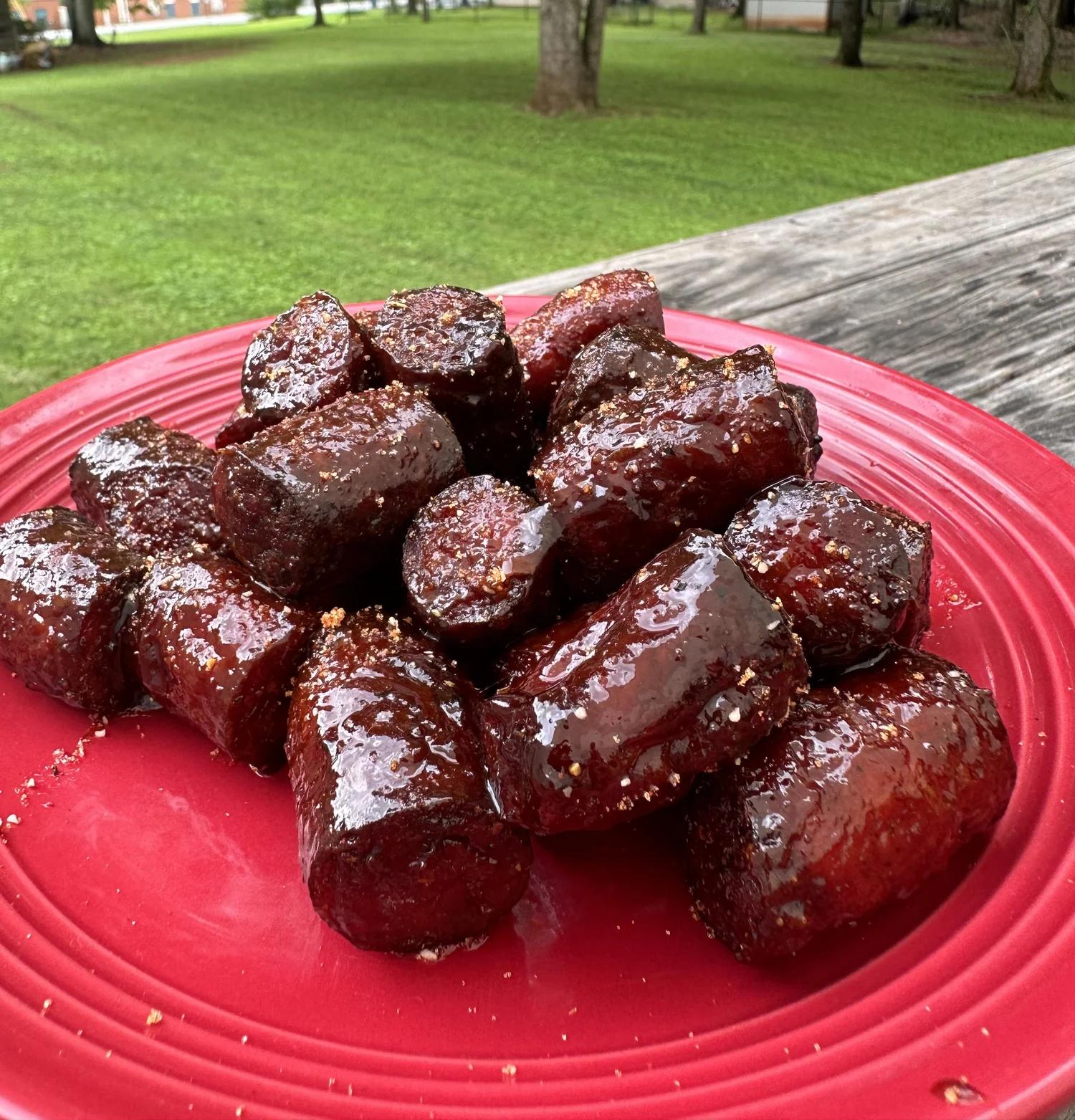When it comes to barbecue, there are few dishes that can compare to the mouthwatering goodness of smoked sausage burnt ends. These savory and tender bites of meat are a true delight for meat lovers and barbecue enthusiasts. In this article, we will explore the art of making smoked sausage burnt ends and provide you with all the information you need to create your own delicious masterpiece.

What are Smoked Sausage Burnt Ends?
Smoked sausage burnt ends are small, bite-sized pieces of smoked sausage that are perfectly cooked until they become caramelized and slightly charred on the outside. These delicious morsels are typically made from pork sausage, but you can also use beef or any other type of sausage that you prefer. The key to achieving the perfect burnt ends lies in the smoking process and the use of a flavorful barbecue sauce.
How to Make Smoked Sausage Burnt Ends
Creating the perfect smoked sausage burnt ends requires a few simple steps. Here's a step-by-step guide to help you get started:
Step 1: Prepare the Sausage
Begin by selecting your preferred type of sausage. Pork sausage is a popular choice, but feel free to use any variety that suits your taste. Cut the sausage into bite-sized pieces, ensuring that they are all roughly the same size for even cooking.
Step 2: Season the Sausage
Season the sausage pieces with your favorite barbecue rub or a combination of spices that complement the flavors of the sausage. Make sure to coat each piece evenly for maximum flavor.
Step 3: Smoke the Sausage
Preheat your smoker to a temperature of around 250°F (121°C). Place the seasoned sausage pieces directly on the smoker grates or use a smoker basket for easier handling. Smoke the sausage for approximately 2-3 hours, or until they reach an internal temperature of 160°F (71°C).
Step 4: Glaze with Barbecue Sauce
Once the sausage pieces have reached the desired temperature, remove them from the smoker and place them in a foil pan. Generously coat the sausage with your favorite barbecue sauce, making sure that each piece is evenly coated.

Step 5: Return to the Smoker
Return the foil pan with the sauced sausage to the smoker and continue cooking for an additional 30-45 minutes. This will allow the barbecue sauce to caramelize and create a sweet and sticky glaze on the sausage pieces.
Step 6: Serve and Enjoy
Once the smoked sausage burnt ends are done, remove them from the smoker and let them rest for a few minutes. Serve them hot and enjoy the flavorful combination of tender meat, smoky flavors, and sweet barbecue glaze.
Q: Can I use different types of sausage?
A: Absolutely! While pork sausage is a popular choice, you can use beef, chicken, or any other type of sausage that you prefer. Just make sure to adjust the cooking time accordingly.
Q: Can I use store-bought barbecue sauce?
A: Yes, you can use store-bought barbecue sauce for convenience. However, if you want to take your smoked sausage burnt ends to the next level, consider making your own homemade barbecue sauce for a personalized touch.
Q: Can I make smoked sausage burnt ends in an oven?
A: While smoking the sausage is the traditional method for creating burnt ends, you can also achieve similar results in an oven. Simply follow the same steps, but bake the sausage at a temperature of 250°F (121°C) for the specified times.
In Conclusion
Smoked sausage burnt ends are a delectable treat that will impress your guests and satisfy your barbecue cravings. With a few simple steps and some patience, you can create your own batch of these flavorful bites. Whether you enjoy them as an appetizer, a main course, or a party snack, smoked sausage burnt ends are sure to become a favorite in your barbecue repertoire.
If you want to know other articles similar to Delicious smoked sausage burnt ends: the perfect bbq delight you can visit the Barbecue category.


Related Articles